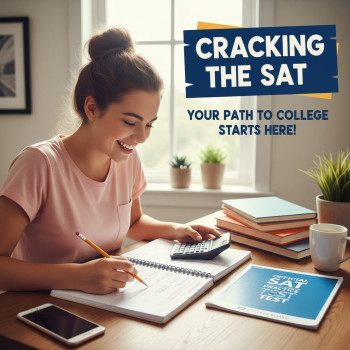Understanding Wake Forest’s SAT Expectations: The Big Picture
When you’re planning to apply to Wake Forest University, one of the first questions that pops up is: do I need to take the SAT? And if I do, what score will make my application competitive? The short answer is: Wake Forest considers SAT scores if you submit them, and most admitted students land in a pretty selective range. But that short answer doesn’t help you decide what to do next. This guide breaks down the SAT landscape for Wake Forest — what the numbers mean, how test-optional policies work in practice, how to present your best profile, and practical steps for students and parents to make choices with confidence.

Is the SAT required for Wake Forest?
Wake Forest’s approach reflects a broader trend among selective private universities: they often adopt a flexible stance toward standardized testing. Wake Forest considers SAT scores when you submit them, which means SAT/ACT scores are optional in many cases — but they’re still an important factor if you choose to include them. Why the nuance? Because test-optional admissions policies give students more agency: strong test scores can strengthen an application, but students with powerful academic records, essays, or extracurriculars can still be competitive without tests.
In short: you don’t automatically have to submit an SAT score, but submitting a strong score can help. The next sections explain how to decide whether to take the Digital SAT, and how to present scores intelligently.
How colleges use “test optional” in practice
- Admissions offices look at the whole file: grades, course rigor, essays, recommendations, activities, and — when submitted — test scores.
- At test-optional schools, applicants with weaker academic metrics sometimes submit strong test scores to provide additional evidence of readiness. Conversely, students with exceptional grades and contextual achievements may omit scores.
- Test scores can also be considered for scholarships, course placement, and advising, even if they’re not required for admission.
What SAT scores does Wake Forest typically admit?
To set expectations, most students admitted to Wake Forest have SAT composite scores clustered in a competitive range. Knowing the range helps you decide whether taking (or retaking) the SAT is likely to improve your chances.
Typical SAT score range
Admitted students at Wake Forest commonly report composite SAT scores in the mid-to-high range. For planning purposes, think of a competitive target as a composite score that falls within the higher end of the reported range. If your scores are below that range, other application elements must strongly support your readiness; if your scores are within or above the range, they can be a valuable complement to your record.
Should you submit SAT scores to Wake Forest? A decision checklist
Deciding whether to send SAT scores should be a strategic choice. Use this checklist to weigh the pros and cons.
- Where do your scores fall? If your Digital SAT composite is within or above Wake Forest’s typical admitted range, submit it.
- How strong is the rest of your application? Exceptional GPA, rigorous curriculum, glowing recommendations, and standout essays may reduce the necessity of submitting scores.
- Scholarships and placement: If you’re aiming for merit scholarships or want to be accurately placed in math or writing courses, a good score can help.
- Score improvement potential: If you believe you can improve materially with focused prep, a retake — especially the Digital SAT format — may be worth it.
- Personal circumstances: Consider testing stress, time constraints, and access to prep resources. The goal is to present your strongest, most authentic application.
Making the most of the Digital SAT
The SAT has shifted fully to the Digital SAT format, which changes pacing, interface, and question types in subtle ways. If you haven’t yet taken the Digital SAT, it’s important to practice in an environment that mirrors the actual test: full-length adaptive sections, on-device navigation, and the digital tools you’ll use on test day.
Key Digital SAT differences to plan for
- Adaptive testing structure: sections adapt to your performance, changing how strategy and timing play out.
- On-screen tools: calculators, highlighting, and passage navigation are digital; you’ll want comfort using them efficiently.
- Timing nuances: pacing strategies differ because of section structure — practice under timed, digital conditions.
How Wake Forest reads SAT scores — practical strategies
Whether Wake Forest superscores or considers section-level bests can influence your sending strategy. Even with optional policies, thoughtful score submission can give you an edge.
Sending strategies that make sense
- Send your best test sitting(s): If you superscore across dates, combine strongest section performances to present the highest composite you can authentically claim.
- Don’t feel pressured to send everything: Score Choice tools allow you to selectively send dates to colleges; use that to show your best work.
- Consider the whole application: If a test score amplifies your demonstrated strengths (e.g., excellent math score for a prospective engineering or data science major), submit it.
Table: Sample SAT decision framework for Wake Forest applicants
| Applicant Profile | Typical Action | Why |
|---|---|---|
| Composite SAT within Wake Forest’s admitted range | Submit scores | Strengthens academic evidence; may help with scholarships/placement |
| Composite SAT below range, but GPA & course rigor strong | Consider omitting scores; bolster essays & recommendations | Application context can outweigh a lower score; optional policy allows omission |
| Composite SAT below range, weak course rigor/GPA | Prepare for a retake or submit only if significant improvement | Test can demonstrate potential, but improvement should be material |
| Scores moderate; planning major requiring math/verbal evidence | Submit if section scores support major | Targeted section strength helps placement and demonstrates fit |
How to build a prep plan that moves the needle
Improvement matters, but not all study time is created equal. A focused plan that addresses your unique weak points — guided by practice tests and targeted feedback — yields better gains than unfocused cramming.
Step-by-step prep roadmap
- Start with a diagnostic: Take a full Digital SAT practice test under realistic conditions to identify strengths and weaknesses.
- Set a realistic target: Choose a score goal based on Wake Forest’s range and your personal timeline (application deadlines, early vs. regular decision).
- Make a study schedule: Focus on high-impact skills (reading strategies, algebra readiness, evidence-based writing) and schedule consistent, shorter practice sessions rather than marathon study days.
- Use real practice material: Practice on digital-adaptive platforms and official practice tests to simulate actual test conditions.
- Analyze mistakes: Logging errors and spotting patterns (e.g., timing, careless errors, question types) accelerates progress.
- Simulate test day: Do at least one or two full, timed practice tests on-device in the fortnight before your test date to build stamina and confidence.
How personalized tutoring helps — an honest look
Many students see better, faster progress with 1-on-1 guidance. Personalized tutoring can help you prioritize what to study, build test-taking strategies tailored to the Digital SAT format, and maintain momentum when motivation dips.
For example, Sparkl’s personalized tutoring approach offers one-on-one guidance, tailored study plans, expert tutors, and AI-driven insights that help identify precise skill gaps. That kind of targeted support can be especially useful if you have a narrow window to improve or if you need an individualized strategy that reflects your strengths, intended major, and application timeline.
When tutoring makes the most sense
- You need measurable score improvement in a short time-frame.
- You want structure and accountability to stay on a study plan.
- You benefit from customized feedback on essays, target sections, and pacing strategies.
- You want expert guidance about whether to submit scores to a test-optional school like Wake Forest.
Beyond scores: strengthening your Wake Forest application
Wake Forest values intellectual curiosity, leadership, community engagement, and the ability to contribute to its campus life. Strong test scores are valuable, but they’re only one part of a holistic review. Consider these complementary elements:
Essays and recommendations
- Essays are your chance to show personality, growth, and intellectual curiosity. Authentic anecdotes that reveal how you think are more memorable than polished but generic statements.
- Recommendations should come from teachers who can speak to academic potential and classroom contributions rather than from those with simply famous-sounding titles.
Curriculum and grades
A rigorous course load with strong performance signals readiness for Wake Forest’s classroom. Admissions teams weigh the context: the opportunities available at your high school and any upward trends in your transcript.
Extracurriculars and demonstrated interest
What you do outside the classroom matters when it shows depth and sustained commitment. Quality beats quantity: leadership in a long-term project can be more persuasive than a long list of short-term activities.
Timing and logistics — plan around deadlines
Application timing affects your strategy. Wake Forest offers early application options as well as regular decision, and your testing timeline should align with those deadlines. If you’re applying early, plan a Digital SAT test date and potential retake far enough in advance to get scores back and decide whether to submit them.
Practical timeline tips
- Take a diagnostic one academic year before application deadlines to guide long-term prep.
- Target a full, realistic test date at least 6–8 weeks before early application deadlines to allow for a retake if needed.
- For regular decision, spacing two test dates across the junior-senior year transition can give you an opportunity to raise your score.
Common applicant scenarios and recommended actions
The following scenarios reflect typical student situations. Use them to decide whether to test, to retest, or to focus on other application strengths.
Scenario A: Strong GPA, gap between scores and grades
- Action: Consider taking the Digital SAT at least once. If scores remain below target, you can choose to omit them while emphasizing GPA, course rigor, and teacher recommendations.
Scenario B: Mixed grades, potential to improve scores
- Action: Invest in focused prep and take the test after a deliberate 6–8 week plan. A meaningful score increase can strengthen the file.
Scenario C: Balanced profile but aiming for merit scholarships
- Action: Submit test scores if they meet scholarship thresholds. If not, consider a retake if time permits.
Practical tips for parents: how to support without overpowering
Parents play a critical role: providing emotional support, logistical planning, and access to resources. But your teenager’s ownership of the process matters for motivation and authenticity. Here are respectful ways to help:
- Help create a calm study environment and a realistic schedule.
- Encourage practice under actual testing conditions and celebrate small gains.
- When considering paid help like tutoring, discuss goals and budgets openly — targeted, short-term tutoring is often more effective than long-term, unfocused hours.
- Let your student take the lead on essay topics and extracurricular narratives; admissions officers value authentic student voice.
Putting it all together: a sample plan for a Wake Forest applicant
Below is a straightforward, practical plan that balances academic preparation, test strategy, and application polishing — useful for most students aiming at Wake Forest.
- Junior year fall/winter: Take a diagnostic Digital SAT. Start a focused prep plan (8–12 weeks) if you aim to submit scores.
- Junior year spring: Take the Digital SAT. Review score report, analyze errors, and target any weaknesses.
- Summer before senior year: Complete major essays drafts, secure teacher recommenders, and maintain academic momentum.
- Senior year early fall: If applying early, ensure a final test date is at least 6–8 weeks before deadlines; polish essays and application materials.
- Senior year winter (regular decision): Consider a final SAT retake only if targeted improvement is feasible; otherwise focus on essays and supplements.
Example checklist the week before test day
- Complete one full-length, digital practice test under timed conditions.
- Review common question types where you lost points and revise strategies.
- Pack test-day essentials: approved device, chargers (if allowed), ID, snacks, and calm mindset routines.
- Get consistent sleep and avoid last-minute cramming; rest and clarity matter more than extra hours of unfocused study.

Final thoughts: Making the choice that’s right for you
When you’re aiming for a selective school like Wake Forest, the SAT is one tool among many. It can boost an application when the score reflects a student’s true academic potential, and it can be safely omitted when other parts of the application tell a stronger story. The smart path is the one that balances honest self-assessment with practical preparation.
If you’re unsure where to start, begin with a diagnostic practice test and a clear timeline. If targeted, efficient guidance would help — whether a short block of 1-on-1 tutoring to tighten strategies, or an expert review of which scores to send — then consider personalized tutoring options. Programs that combine expert tutors, tailored study plans, and data-driven insights can save time and make prep more effective. Thoughtful support (for instance, Sparkl’s personalized tutoring model) can help you turn practice into real score gains while keeping the bigger application picture in view.
Resources to keep on hand
As you move through the process, maintain a small, trusted toolkit: official digital practice materials, a study schedule, a diagnostic history of your practice tests, and a list of recommenders and deadlines. Keep your focus on steady improvement and authentic presentation — Wake Forest, like many selective universities, responds to students who show both academic readiness and genuine fit.
Wrapping up: confidence, clarity, and next steps
Applying to Wake Forest is an exciting, sometimes nerve-wracking milestone. The right test strategy is personal: there’s no one-size-fits-all rule. Use the data you have, pair it with honest reflection about your strengths, and make a plan that fits your life and goals. With clear steps, targeted practice, and the right support, you can present an application that reflects your best self. Good luck — you’ve got this.






















No Comments
Leave a comment Cancel